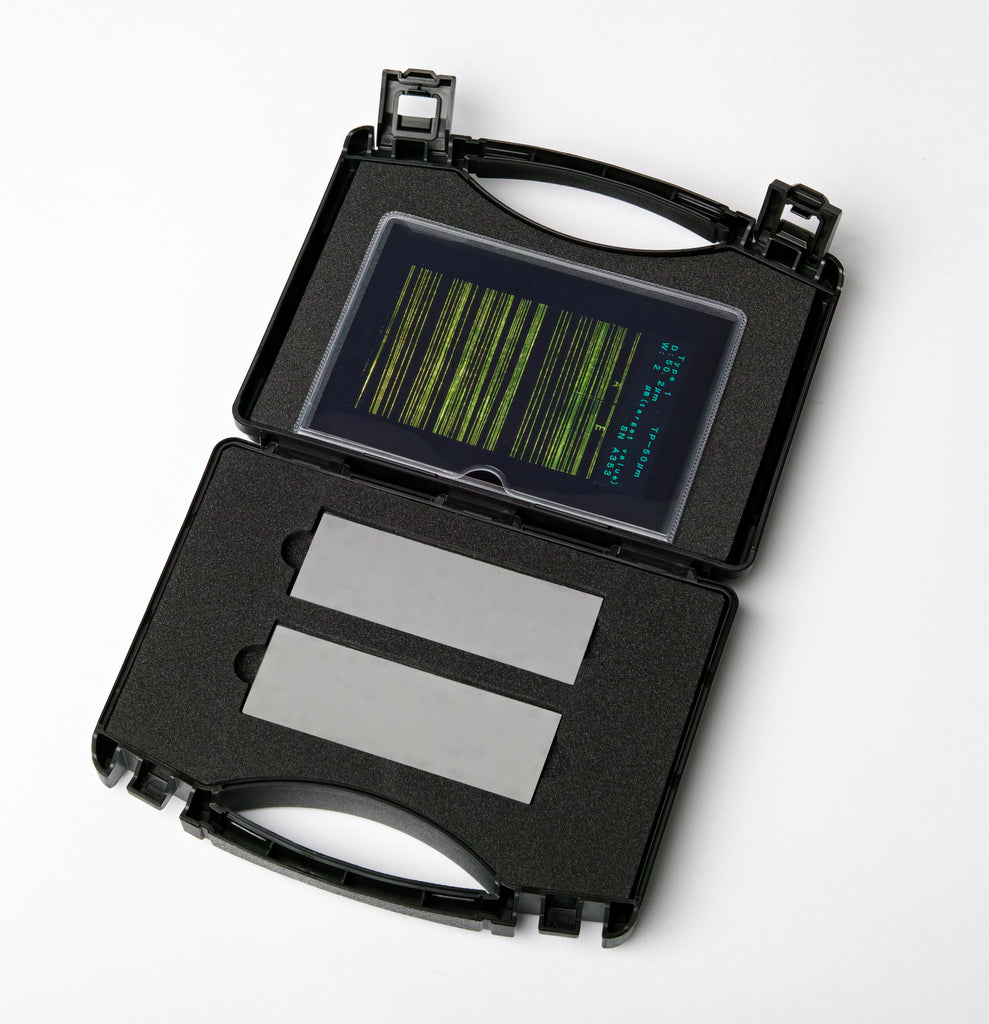
NiCr Test Panels Magnaflux NiCr 20 micron panels (One Pair)
Twin Test Panels for Checking Comparative Penetrant System Performance The NiCr Test Panels are made from brass plated with 20 micron nickel-chrome alloy and stressed to induce linear cracks in the plating. The cracked test piece is cut into two twinned panels so that in-use materials can be run in comparison to new and unused materials on identical flaws. Comparison testing can show performance differences in the penetrant material, emulsifiers used with post-emulsified penetrant, developers, or the processing equipment itself. NiCr Test Panels are also known as ISO 3452-3 Type 1 reference blocks.
Dimensions
- Length 100mm + 2mm
- Width 35mm + 2mm
- Thickness 2mm + 0.2mm

